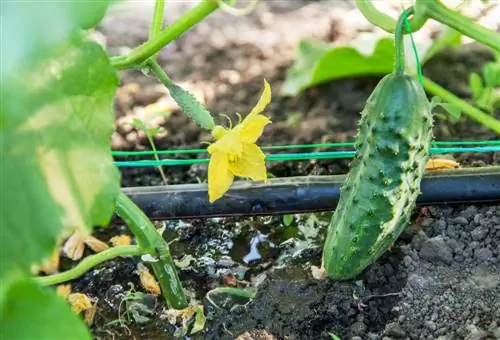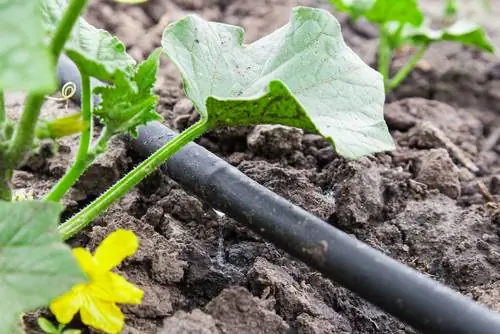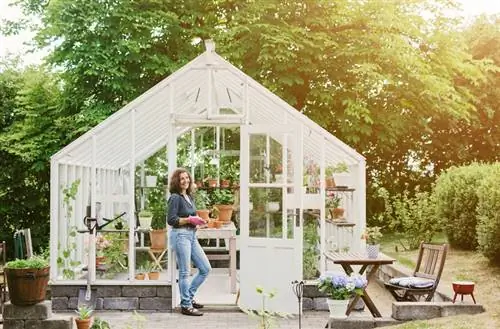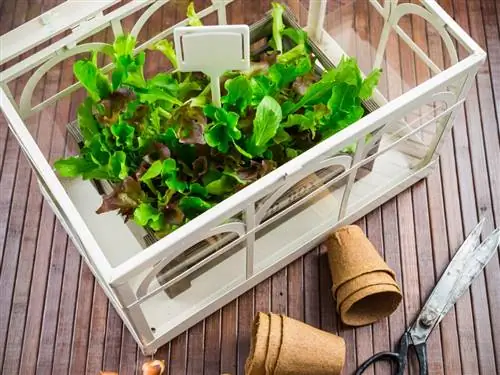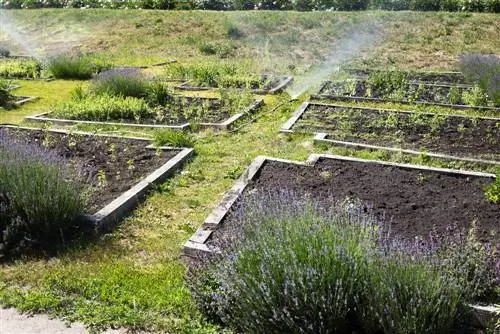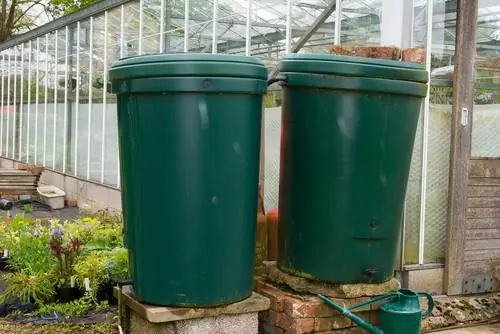- Author admin [email protected].
- Public 2023-12-16 16:46.
- Last modified 2025-06-01 06:02.
In a greenhouse, the soil dries out quickly, which can quickly become problematic, especially for plants that require a lot of water, such as tomatoes or cucumbers. With automatic irrigation you ensure that the plants are evenly supplied with moisture and can therefore develop he althy and large fruits.
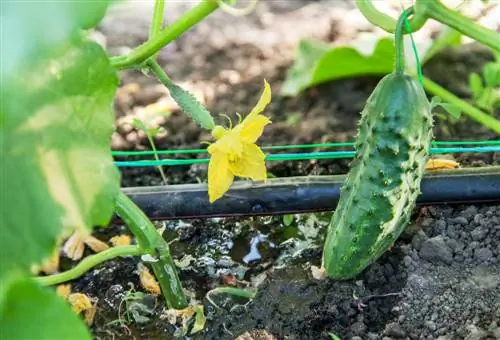
How do I build an irrigation system in the greenhouse myself?
To build an automatic irrigation system yourself in the greenhouse, you will need garden hoses, pearl hoses, connecting elements, wire and possibly a submersible pump. Lay main lines, use T-pieces for branching and anchor the hoses to the ground.
Materials
To install an automatic irrigation system in the greenhouse you need:
- one or more garden hoses of suitable length as connecting hoses
- a roll of pearl hose as an irrigation hose
- Fastening elements: angles, T-pieces, plugs
- Wire
- if necessary a small submersible pump
Beforehand, carefully measure how many meters of each type of hose you actually need and how many connectors you need to use. The normal water hoses serve as the main lines, the pearl hoses as branch lines. Use either an external tap or a rain barrel as a water source. For the latter, you need a small submersible pump to pump the water into the greenhouse. However, this does not apply if the barrel contains at least 1500 liters - and can therefore build up enough water pressure - and is at least 50 to 100 centimeters higher on a platform.
Installing the irrigation system - a guide
Finally, you set up the irrigation system as follows:
- First lay the main lines.
- These run along the beds in the greenhouse and can be anchored to the ground with wire.
- Cut these lines at the necessary locations for the branches.
- You can use a knife for this.
- Insert the T-pieces there.
- You can close any holes or leaks with silicone.
- Connect the pearl tube pieces to the T-pieces.
- Anchor the hoses to the ground with wire.
- Close the ends of the hoses with a plug.
- Only the end to be attached to the reservoir or faucet remains free.
- The submersible pump is hung directly into the rain barrel.
Finally, pair the water source with the garden hose and check if the system actually works. If necessary, you can readjust.
Tip
Caution should be exercised when handling powered submersible pumps as the combination of electricity and water is dangerous. If you don't have a power connection in the garden, you can also use battery- or solar-powered pumps, although they are less reliable.

